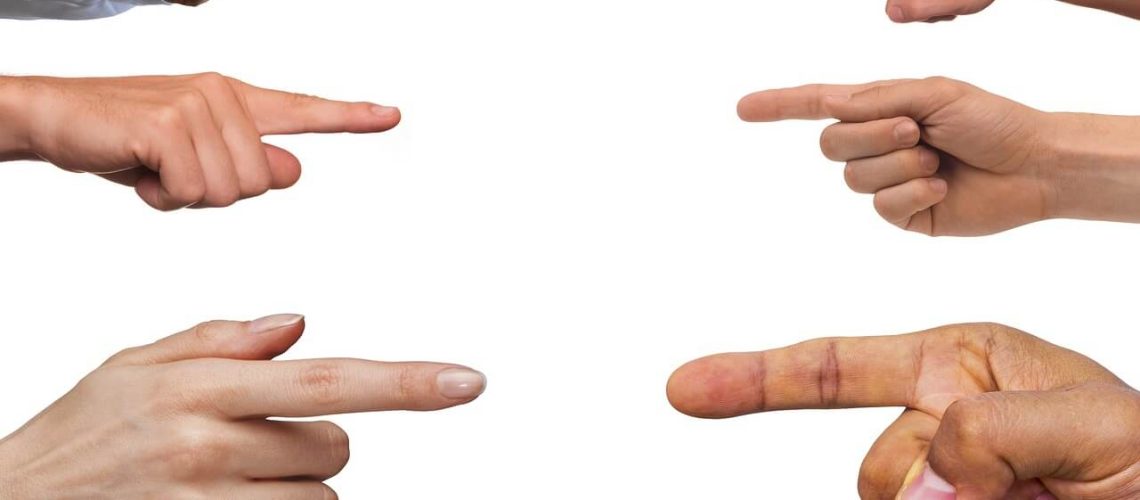How do insurance companies determine fault? Determining who is at fault in a car accident is a legal question under Arizona negligence law, not a box on a form. Adjusters study evidence and apply traffic law to assign responsibility.
Arizona uses a fault-based system with pure comparative negligence, so each driver can carry a percentage of blame, and payouts move with that split. That decision can shape payment for medical care, lost income, and vehicle repairs.
This guide explains how an insurance adjuster reviews police reports, witness statements, scene photos, vehicle damage, video, and traffic violations to set fault percentages.
You will learn what happens if you are at fault in a car accident, how to deal with the at-fault driver’s insurance company, steps to protect your rights after an accident occurs, and key Arizona rules.
For tailored guidance, speak with an Arizona personal injury lawyer at The Sorenson Law Firm. We bring 130+ years of combined Arizona trial and insurance defense experience to fault disputes.
We focus on protecting your rights, building the evidence record, and pursuing the compensation the law allows under Arizona’s comparative negligence rules.
Fault Determination in Arizona
Is Arizona a No-Fault State or an At-Fault State?
Arizona is an at-fault state. Liability for a car accident rests on who caused the collision under negligence law. Some states use no-fault rules with personal injury protection (PIP) that pay medical bills regardless of fault.
Arizona drivers rely on the at-fault driver’s auto insurance liability coverage instead of PIP for bodily injury and property damage losses.
How Does Fault Affect Compensation and Insurance Claims?
When an insurer finds its policyholder responsible, that carrier pays within policy limits. Payments can include medical expenses, lost wages, pain and suffering, and vehicle repairs.
A Phoenix or Tucson crash that places 100% fault on one driver triggers that driver’s insurer to cover the damages caused. If fault is shared, each insurer pays its share.
Your own coverage can still matter, such as medical payments coverage or UM/UIM for an uninsured or underinsured at-fault driver.
Why Does Pure Comparative Negligence Matter?
Arizona applies pure comparative negligence. Your recovery drops by your share of blame. A 20% fault finding means a 20% reduction in recovery. Even a driver with 80% fault can recover 20% of proven damages.
This rule applies in single-vehicle, two-vehicle, and multi-vehicle crashes in Mesa, Scottsdale, Tempe, and statewide. Accurate evidence and careful analysis of traffic law shape these percentages.
How Do Insurance Companies Determine Fault After a Car Accident?
What Does an Insurance Adjuster Review When Determining Who Is at Fault in a Car Accident?
The adjuster gathers and reviews multiple forms of evidence:
- Police report details, including diagrams and any citations.
- Driver and witness statements.
- Photos, dashcam or surveillance video.
- Skid marks, debris fields, and roadway measurements.
- Vehicle damage patterns and repair estimates.
- EDR “black box” speed/braking data when available.
- Road design, construction zones, and weather.
Insurance companies compare these facts to Arizona traffic law and claim histories to determine fault in an accident.
Do Police Reports Decide Who Is at Fault?
A police report guides the investigation, but it does not decide civil liability. An officer can issue a citation for speeding or failure to yield, and that helps prove negligence.
A civil claim still turns on the full record and the preponderance of the evidence standard. Disputes arise when reports contain limited facts or conflicting statements.
How Driver Statements Impact Fault
Adjusters weigh statements for detail and consistency. Recorded statements can be used to limit payment or shift blame.
Keep statements factual, avoid opinions about speed or visibility unless certain, and decline a recorded statement for the other driver’s insurer until you have legal advice.
Arizona’s Legal Standard for Negligence and Comparative Fault
What Must Be Proven To Establish Negligence
Arizona negligence requires proof of four elements: duty, breach, causation, and damages.
- Drivers owe a duty to use reasonable care.
- A breach occurs when a driver violates that duty, such as running a red light.
- Causation links the breach to the crash and the injuries.
- Damages cover medical costs, lost income, and more.
The burden of proof is a preponderance of the evidence, meaning more likely than not.
Does a Traffic Violation Equal Fault for a Car Accident?
Traffic violations can support negligence per se. Examples include DUI, texting while driving, failure to yield, speeding, or red-light violations under Title 28. If the violation caused the crash, liability strengthens. If a violation did not contribute, fault for the accident may still be disputed.
How Pure Comparative Negligence Changes Payouts for Car Accidents
Courts and insurers assign percentages. In a rear-end crash where Driver A is 70% at fault and Driver B is 30%, each pays that share. Verdicts and settlements across the state follow the same rule, so careful documentation of fault splits is key to a fair result.
Examples of Situations Where Fault Is Assigned in Arizona Crashes
Rear-End Collisions
In rear-end collisions, the trailing driver is often blamed for following too closely. However, that presumption can shift. A sudden, unnecessary stop, a cut-in with no gap, or brake failure can lead to shared fault.
Adjusters match bumper and frame damage to statements and EDR data to determine percentages.
Left Turns and Failure To Yield
Left-turn drivers must yield to oncoming traffic unless protected by a green arrow. Disputes arise over signal timing, yellow intervals, and speed. Traffic-camera video, intersection layout, and witness accounts often decide these cases.
Multi-Vehicle Pileups and Lane-Change Crashes
Chain reactions on I‑10 or the 101 can involve staggered impacts. One unsafe lane change or sudden stop can start the sequence. Adjusters map each impact, assign fault to each driver’s movement, and split responsibility across multiple insurers.
Legal Process for Fault Challenges and Insurance Claims
How To File a Claim and Protect Your Rights
After a car accident in Phoenix or Tempe, take these steps:
- Get medical care and keep records.
- Call law enforcement for a police report.
- Notify your auto insurance carrier.
- Collect photos, witness names, and dashcam files.
- Track bills and missed work.
Start the insurance claim with clear facts, and then add evidence as it arrives. For more on next steps, see our resource on insurance claims for car accidents.
When To Give a Recorded Statement or Release Records
Give only basic facts to the at-fault driver’s insurer. Decline a recorded statement until you speak with counsel. Limit medical authorizations to crash-related care. Ask for written questions, and respond with organized records.
Claim Deadlines That Apply in Arizona
Most injury claims must be filed within two years under A.R.S. 12‑542. Claims against a city, county, or state agency require a Notice of Claim within 180 days and a suit within one year under A.R.S. 12‑821.01 and 12‑821. Missing these deadlines can end the case.
What Happens When Fault Is Shared or Disputed?
What Happens if I Am at Fault in a Car Accident?
If you have been found at fault in a crash, options remain. Submit new photos or video, point out report errors, request a split of liability, or file suit to let a jury decide. Early legal help can reframe the evidence before positions harden.
Can You Recover if You Are Partly at Fault?
Yes. Pure comparative negligence allows recovery at any percentage. A driver 60% at fault still recovers 40% of proven damages. This includes medical bills, lost wages, and pain and suffering.
How Insurers Resolve Stalemates
Insurance companies often use inter-company arbitration when fault splits block payment. Neutral experts may weigh in on speed, impact angles, or human factors. UM/UIM claims can apply when the at-fault driver lacks enough coverage.
Key Evidence in Arizona Car Accident Fault Investigations
Evidence That Moves the Needle Most
Strong items include:
- A detailed police report with diagrams and citations.
- Impartial eyewitness statements with clear vantage points.
- Video showing signals, speed, and lane position.
- EDR data matching claimed speeds and braking.
- Damage patterns consistent with the mechanics of the crash.
How To Collect and Preserve Proof
Take wide and close photos, keep original dashcam files, schedule a timely vehicle inspection, and request nearby business or traffic-camera video. Save phone records when distracted driving is suspected. Document weather and road hazards.
Do Expert Reconstructions Help on Close Calls?
Accident reconstructionists, human factors experts, and toxicologists can resolve close calls, especially with DUI or distraction cases. Their work often influences adjusters and juries in Maricopa and Pima County cases.
Common Insurance Company Tactics and Smart Responses
Tactics That Reduce Payouts or Shift Blame
Common moves include quick low offers, recorded statement traps, broad medical releases, blaming preexisting conditions, and inflating comparative fault percentages. Each tactic targets a reduction in the final check.
How To Deal With At-Fault Driver’s Insurance Company
Share basics to open the claim, and then provide organized evidence. Avoid speculation. Decline a recorded statement without counsel. Put requests and responses in writing to create a clear record.
When Do You Need a Lawyer To Deal With an Insurance Company?
Seek a lawyer to deal with insurance company personnel when fault is disputed, injuries are serious, crashes involve multiple vehicles, the policy is commercial, a government vehicle is involved, or UM/UIM issues arise.
Legal representation levels the field with insurance companies that handle claims every day.
The Role of a Car Accident Attorney in Arizona
How a Lawyer Handles Adjusters and Evidence
Counsel manages all adjuster contact, preserves EDR data, obtains traffic-camera video, and hires experts when needed. Demand letters cite Arizona negligence standards, traffic law, and medical proof tied to the crash.
How Damages Are Valued and Negotiated
Damages include medical expenses, lost wages, loss of earning capacity, pain and suffering, and future care. Settlement strategy addresses comparative negligence and policy limits, with a clear damages model anchored by medical records and wage proof.
What Happens if Settlement Talks Fail?
Your lawyer files suit, completes Rule 26.1 disclosure, conducts depositions and motions, and pursues mediation or trial in Maricopa, Pima, or neighboring counties. Courtroom experience pressures insurers to value the case fairly.
How The Sorenson Law Firm Can Help
We are a Tempe-based, minority-owned law firm serving Phoenix, Tucson, Mesa, Scottsdale, and courts statewide.
Our team brings 130+ years of combined experience handling car accident litigation and insurance defense, which gives us insight into how insurance companies determine fault.
Our services cover investigation, accident reconstruction, medical record analysis, dealing with the insurance company, and timely litigation. We manage deadlines under A.R.S. 12‑542 and the public entity claim rules, and we build the record that supports your case value.
How To Get Started Today
Start with a free consultation and case evaluation. Call our Tempe office at 480-839-9500 or contact us online today to speak with a personal injury lawyer who knows Arizona law, Arizona roads, and Arizona courts.
Key Points To Remember
- Arizona is an at-fault state with pure comparative negligence; recovery drops by your percentage of blame.
- Insurance companies review police reports, witness accounts, photos, video, damage patterns, and traffic violations to determine fault.
- A citation helps prove negligence but does not automatically decide civil liability.
- Deadlines matter: Two years for most injury claims under A.R.S. 12‑542; shorter timelines apply to public entities.
- Recovery is possible even if you share fault, including UM/UIM paths when coverage is lacking.
- Experienced counsel can counter insurer tactics, preserve key evidence, and protect claim value.
Additional Resources
- Arizona Revised Statutes — See A.R.S. 12‑542 (limitations), 12‑821.01 and 12‑821 (claims against public entities), and Title 28 traffic law used in negligence cases.
- ADOT Crash Data and Safety Resources — State crash facts, safety programs, and links that support accident context and prevention.
- NHTSA Traffic Safety — National research on crash causation, distracted driving, impaired driving, and occupant protection.



